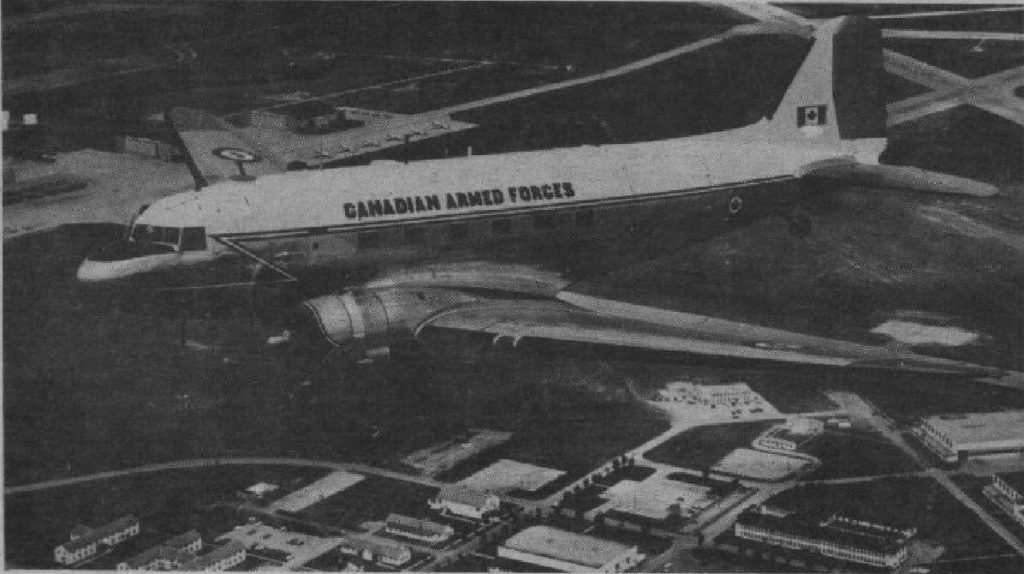(Republished from the 14 January 1976 issue of The Voxair)

OTTAWA—0l’ number 12924 flew her last trip under her own power November 25, from Winnipeg to Ottawa.
But the 29-year old Canadian Armed Forces’ Dakota (DC-3), oldest type of aircraft on the Forces’ inventory, will make at – least one more flight, dangling ignominiously from a powerful Chinook helicopter, the Forces’ newest type of aircraft.
The old vet, one of six left in the Forces, now is being stripped of engines and other removable fixtures at CFB Ottawa’s Uplands
installation, in preparation for the airlift to Ottawa’s Defence Research Establishment at Shirley’s Bay.
There, old 924 will end her days with her airframe being used to test something called the “electro-magnetic compatibility” of Canadian Forces’ aircraft.
DREO scientists have a computerized prediction program of how the electro-magnetic fields of various Dakota equipments
interact, and what interference might occur. The tests on Dak 924 will determine whether actual readings validate the forecast model.
The effectiveness of the aircraft navigation and radio receivers can he seriously degraded by interference from incompatible equipment.
At the end of a five-year testing period, scientists hope to be able to, forecast the electro-magnetic compatibility of all types of Canadian Forces aircraft. Using models, they can predict interference between equipments, and recommend actions to overcome the incompatibility.
Dakotas first came into service with the RCAF in 1943, and No. 924 arrived in July, 1946. When she again takes to the air, her original weight-of 9.tons will have been shaved down to less than eight tons, well within the Chinook’s lift capability of 28,000 pounds.
With its 95-foot wingspan, Dak 924 is 35 feet longer than the rotor span of the Chinook, and its fuselage length is almost double that of the Chinook.
Dangling over the Ottawa Skyline on her last flight from Uplands to Shirley’s Bay should make quite a hit with camera and aviation buffs.
